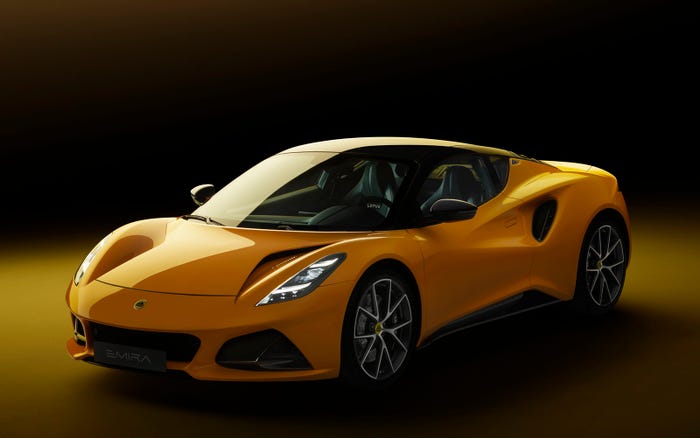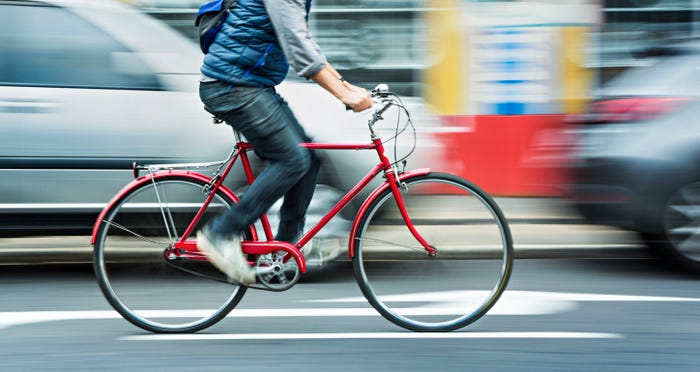SUVs Outsell Cars in Oz for First Time
“The shift in industry dynamic we observed last year has now become entrenched in our market. It is a growth pattern that we expect will continue,” an industry executive says.

For the fourth time in five years Australia’s motor industry is celebrating a record annual result as – for the first time – sales of SUVs outstripped cars.
Industry statistical service VFACTS says 2017 deliveries rose 0.9% to 1,189,116, units, capped off by a record December with sales up 4.1% to 102,820 units.
Federal Chamber of Automotive Industries CEO Tony Weber says Australians bought 465,646 SUVs during 2017 for a 39.2% share of the market, compared with 450,012 cars with a 37.8% share.
“The shift in industry dynamic we observed last year has now become entrenched in our market. It is a growth pattern that we expect will continue,” Weber says in a statement.
Light-commercial vehicles continued their steady climb last year, rising 8.6% to 236,609 units as their market share reached 19.9%, up from a year-earlier 18.5%.
Toyota, up 3.3% to 216,566 units, was the year’s top-selling brand with an 18.2 % market share. It was its highest tally since 2012 and more than 100,000 units ahead of Mazda with 116,349 units (9.8%).
Hyundai followed with 97,013 units (8.2%), ahead of GM Holden’s 90,306 (7.6%) and Mitsubishi’s 80,654 (6.8%).
The top-selling model for 2017 was the Toyota Hilux, for the second year in a row.
HiLux, with 47,093 units, broke its previous record of 42,956 units set in 2008. It is the only vehicle other than a passenger car to be Australia’s best-selling vehicle and notched up a 20th consecutive year as the country’s top-selling commercial vehicle.
The ever-green Toyota Corolla – which celebrated 50 years in local showrooms last year – topped car sales for the fifth year in a row with 37,353 units.
Weber says while the stability of the Australian economy and low interest rates are influential factors in the overall market growth, it is the fierce competition between brands that provides the momentum.
“To have eight record months out of 12 in 2017 speaks volumes for how brands successfully placed new products and incentives into the market, which kept attracting buyers into the showrooms right through the year,” he says.
For Toyota it was its best result in five years, boosted by the record tally for the popular HiLux and supported by record deliveries of Toyota’s SUVs.
It was the 21st time Toyota has led the Australian new-vehicle market, including the past 15 years in a row, and the 13th time it has sold more than 200,000 vehicles in a calendar year.
The Camry was Australia’s best-selling midsize car for the 24th year in a row with 23,620 units. Other segment leaders for Toyota were LandCruiser Prado, LandCruiser wagon, HiAce van and HiAce bus.
Toyota Australia President Matthew Callachor says while SUVs outsold cars across the industry for the first time last year, the strongest percentage growth in the past two years has occurred in LCVs.
“SUV sales have grown 14% during this period, while sales of LCVs have grown almost 18.9%,” he says in a statement.
“This surge in demand for vehicles like HiLux can be viewed as an extension of the popularity of SUVs,” he says. “They’re high-riding vehicles that can take you on your adventures while delivering car-like features and comfort.”
Callachor says in the last decade, Toyota has sold more than 2.1 million vehicles in Australia – 975,000 units ahead of any other brand.
“This equates to more than 260 extra Toyota vehicles being sold every single day throughout that period,” he says.
Mitsubishi Australia scored record December sales of 9,019 units for the month, taking the brand to fourth place in the market.
Chief Operating Officer Tony Principe says it was a strong month to finish off a good calendar year for the brand.
“We’ve worked hard to position our SUV and LCV range in a very competitive market this year and the strong finish to the year reflects the successful outcome of this work,” he says in a statement.
Volkswagen retained its title as Australia’s best-selling European importer as it reported annual sales of 63,354 units. VW notched 58,004 sales and its Skoda brand a record of 5,350.
It says supply constraints left it far short of demand for its most popular variants, including the Tiguan SUV and Amarok V-6 pickup.
In 2016 the group sold 61,531 units.
VW’s Commercial Vehicles division achieved record sales, up 14.1% to 15,688 units.
Subaru sales rose 11.7% to a record of 52,511 units for its 18th annual sales record in the past 20 years. December was its 36th consecutive month of growth,
The Forester was Subaru’s best-seller in 2017, with 12,474 units. The new generation Impreza soared 131.6% to 11,903 units, putting it ahead of the Outback (11,340).
Isuzu Ute Australia claims to being a serious contender in both the 1-tonne pick up and SUV categories after double-digit growth in 2017.
Its 2017 result rose 10.4% to 25,804 units.
“This is made all the more remarkable given that this now signifies double-digit growth for nine years in a row for the two-car brand in hotly contested market segments,” it says in a statement.
Managing Director Hiro Kuramoto says the dealer network has grown to 140 outlets across every state and territory.
Prospects for this year were pumped up when Transport Minister Barnaby Joyce said the removal of import tariffs on safer new vehicles is worthy of serious consideration.
About the Author
You May Also Like



